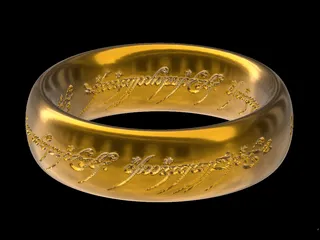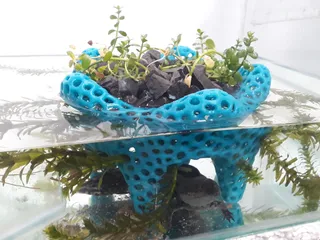Neptune scaled one in 250 million
Description
PDFOriginally published here: Neptune scaled one in 250 million by tato_713 - Thingiverse
This model was made using the contrast enhanced mosaics made by Bjorn Jonsson from the data of the Voyager 2 probe. The "relief" of the model is actually the albedo (brightness) level. White clouds are high altitude clouds, and the greats storms are darker vortex of clouds, so we can assume the albedo is proportional to the level of the clouds and the these models represent that. However it must be consider that the wind speeds of the atmosphere change with the latitudes, so the configuration of the atmosphere changes drastically over the time. The rings are actually thinner than the represented model. The height of the ring is 1mm for the more solid disk; 0.6mm for the wider thinner disk; and 0.3mm for the voids between the rings.
The file's names explained:name_1_x_10_y.stl is 1 : x* 10^y. So _1_6_10_7 is 1:600000000 or one in 60 million.
Neptune
Neptune is the farthest known planet in the Solar System, and the fourth in diameter, four times Earth's. It is slightly heavier and denser than Uranus. These two planets are labeled as "ice gigants". The atmosphere is rich in water ammonia and methane, together with hydrogen and helium gases. The mantle has no a discrete interface with the atmosphere, and consist mainly in a ocean of superionic water, a mix of hydrogen and oxygen ions. Deeper in the mantle, methane decomposes and condense into diamonds, falling like rain into a ocean of liquid carbon. Neptune has a big captured moon, Triton, which may be a former TNO (Trans Neptunian Object). Many TNO's orbits (mainly scattered disk objects, like Eris, and resonants, like Pluto) are greatly influenced by the gravity effect of Neptune. The other moons of Neptune may be rubble piles from the capture process of Triton. Scattering and collisions prevented the formation of medium sized moons. Among the other moons of Neptune are Proteus, Nereid and Larissa. It also has a tiny ring system that it would be difficult to see even close to it, with arcs within the disks with denser areas.
- Type: Planet. Ice giant.
- Orbit: Sun.
- Orbital period: 164.8 yr.
- Composition: Hydrogen, helium atmosphere; water amonia and methane mantle, rocky core.
- Density: 1.638 g/cm3.
- Dimensions: 49528 km × 48682 km
- Model scale: 1:2.5x108 (20cm) 1:5x108 (10cm) 1:1x109 (5cm)
References
Other astronomical objects
Tags
Model origin
The author marked this model as their own original creation. Imported from Thingiverse.




